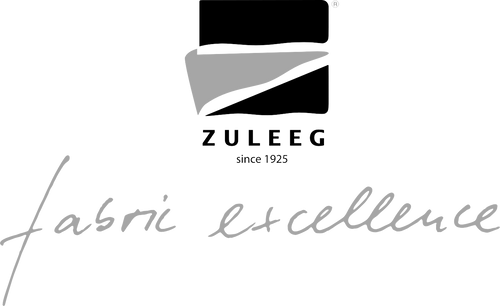You've ordered fabrics from our online shop, unpacked your high-quality Zuleeg fabrics, are thrilled, and are wondering how you can enjoy your new favorite fabrics for as long as possible?

Whether cotton, polyester, wool, silk or linen – textiles are more diverse than ever today and all have individual care needs.
All fabrics available for purchase in our online shop undergo rigorous wash tests. Only after confirming that your passion meets our high quality standards are the fabrics launched.
The term "care" here refers to the washing, drying, and ironing of textiles. We attach a care label to every fabric we deliver, containing care instructions and material composition, along with the various care symbols. These symbols show you how to optimally wash, dry, and iron your favorite fabric so that you can enjoy your hand-sewn garment for a long time.
Our washing test before your fabric arrives
Before our high-quality fabrics made in Germany reach you, they undergo rigorous washing tests.
First, the fabric is washed in the washing machine and tested to check its colorfastness, i.e. how well the color is retained during a normal wash cycle.
After washing, the fabric is dried in the dryer and checked to see whether the fabric retains its shape and structure.
After washing and drying, the fabric undergoes a shrinkage test. This checks how the fabric shrinks or shrinks after drying.
Finally, the fabric undergoes a pilling test. This test describes the formation of small, knot-like threads on the surface of a fabric, which can be caused by abrasion and give the fabric a flawed appearance.
High-quality fabrics with long staple fibers are less likely to pill.
What textile care symbols are there?
Care symbols can be divided into five categories: washing (bucket), bleaching (triangle), drying (square), ironing (iron), and dry cleaning (circle). The care symbols are always arranged in exactly this order on the fabric's care label and are supplemented by additional symbols such as numbers, lines, dots, and letters, thus providing more precise definitions.
Please note the textile care symbols below
Do not spin or wring the fabric too hard
![]()
Do not bleach the fabrics or use fabric softener

the Zuleeg fabric machine dry at low temperature
![]()
do not iron the textiles
![]()
Do not dry clean your DIY clothes
Why should you pay attention to the care symbols?
The various care symbols on our woven fabrics are the results of our extensive testing. They provide information on how to best care for our high-quality, Made in Germany fabrics. Failure to follow these instructions could result in shrinkage of the new fabric or the color of your newly sewn skirt fading.
1. Washing high-quality fabrics
Proper care and a suitable wash cycle are very important for the long-term preservation of your fabrics. It is important to follow the care labels included on each of our Made in Germany fabrics.

For example, cotton can be washed at medium temperatures because this material is quite robust.
The washing machine should not be overloaded, as otherwise the fabric will be subjected to unnecessary stress.
In addition, washing should be done gently, i.e. with the lowest possible spin speed, in order to preserve the quality of the fabric.
However, with wool fabrics , please ensure that you gently press and do not squeeze them when handwashing in cold water (approx. 30°C) using a wool detergent. If you prefer to quickly put your Zuleeg wool fabrics in the washing machine, please use a wool wash program with cold water and a low spin cycle.
2. Drying fabrics
Drying is just as important as washing. However, there are only two different methods.

First, there's air drying. This is especially suitable for delicate fabrics like silk or wool. Hang your laundry in a well-ventilated area to maintain its structure and shape.
You can also put your laundry in the dryer. If your Zuleeg fabric is suitable, you can dry it on a low to medium setting.
Wool should always be air-dried. To do this, carefully wring out the wool and gently stretch the fabric back to its original shape. Then place your hand-sewn garment on a towel, avoiding direct sunlight and direct heating.
3. Ironing the fabrics
If the ironing symbol appears on the care label, please make sure to iron only at the specified temperature. This will allow you to easily remove wrinkles from your DIY clothes.
It's best to iron the wool with a steam iron and a cloth between the ironing irons to protect the wool fibers.

If you follow the instructions and the care symbols, this means the following:
- the fabric for your DIY sewing projects looks like new for longer
- the color of the fabric remains more intense
- the fit of your handmade outfit remains and does not shrink
- The self-sewn garment will remain in good condition and will give you long-lasting pleasure
Greetings from your favorite weaving mill in Upper Franconia from our apprentice Justin, who has compiled all this fabric information and care instructions for you.
